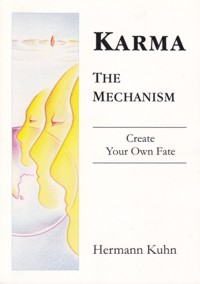
Prakriti sthity anubhava pradeshastadvidhayah (3)
How we experience karmic matter is determined by
- the area of life karma influences when it activates (also called the 'nature' or 'type' of karma)
- for how long karmic molecules stay bound to our interactive karmic field (the duration)
- the intensity with which karma manifests when it activates and
- how many karmic molecules are stored in our interactive karmic field. (3)
The nature (the type) of karma
determines what area of life karma influences when it activates. The next eight sutras describe the eight main areas karma can affect.
The time (duration)
Karmic molecules remain bound to our consciousness from the moment we attach karma until it activates (which dissolves the bond).
Up to its activation karma remains inactive (latent). Though latent karma does not affect us directly, its existence alone limits the stages of development accessible to us (see '14 Stages of Development').
The intensity of karma
determines the power with which karma manifests upon its activation. How intensely we experience karma is determined by the amount of karmic molecules that activate simultaneously.
The number of karmic molecules
stored in our interactive karmic field influences the mechanism and the intensity with which karma decreases at its activation.[3]
The emotional intensity with which we instigate, plan, perform or assent to an action determines for how long and in what intensity karma will manifest in our life when a particular block of karmic molecules activates.
Sutra 4 to 13 describe the eight areas of life where karma manifests (the types of karma)
Sutra 14 to 20 define for how long each of the eight main types of karma can remain attached to us
Sutra 21 to 23 explain what triggers the activation of karma and what determines the intensity of karmic manifestations
Sutra 24 describes the characteristics of karmic molecules.
Karma does not manifest with always the same intensity. Several types of karma can significantly decrease in intensity from the beginning of the activation to their complete dissolution.
We experience this e.g. at the confrontation with an overwhelming problem that seems huge at its first appearance, but then rapidly diminishes in intensity. We feel this in the process of falling in love, when after the first emotional high a more permanent connection is not supported. We sense this at the end of a major phase of life, when our emotional attachment to a certain activity (e.g. a job) dissolves long before it is formally concluded.
This change in intensity is brought about by the decrease in number of karmic molecules that are active during a karmic manifestation. How many molecules are activated at a given time can be calculated. The Gommatasara - Karma Kanda contains the corresponding formula.
 Hermann Kuhn
Hermann Kuhn
